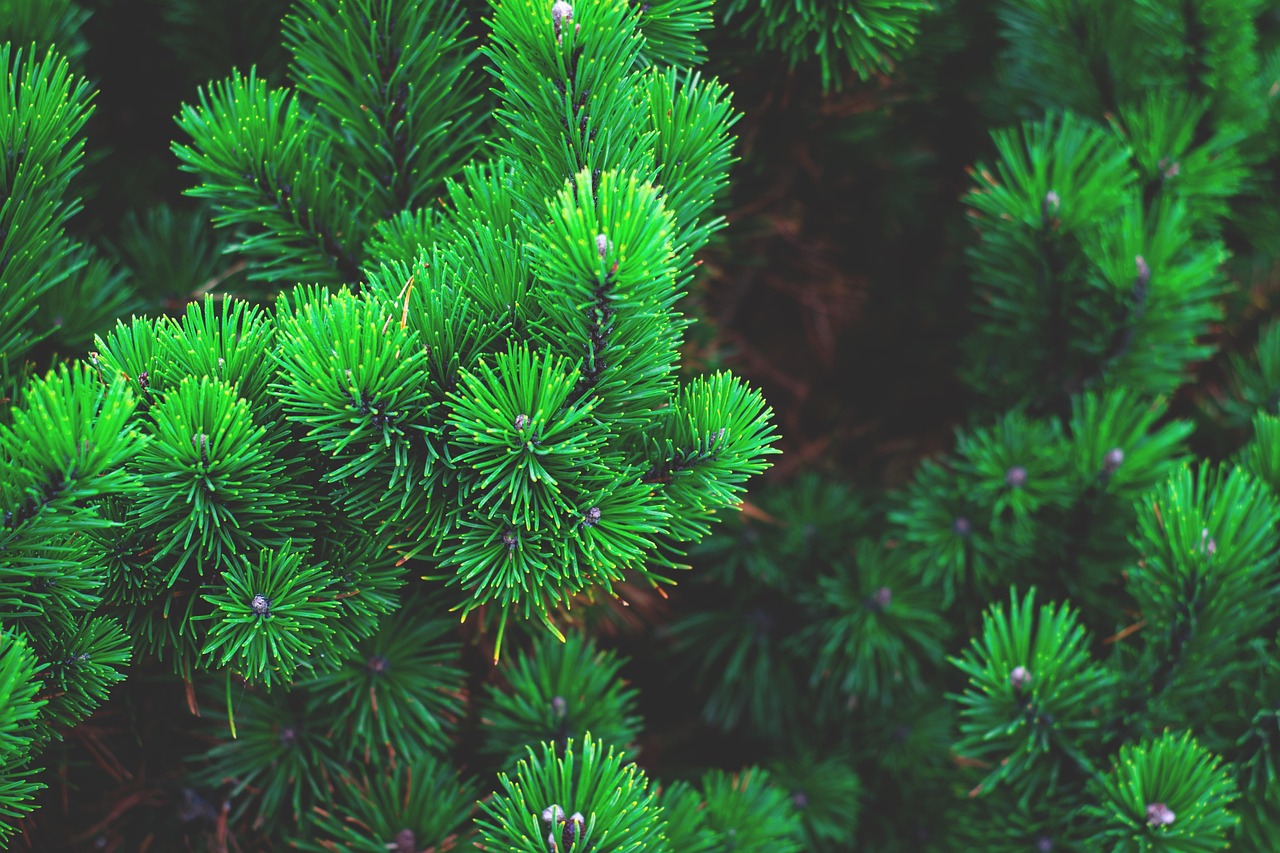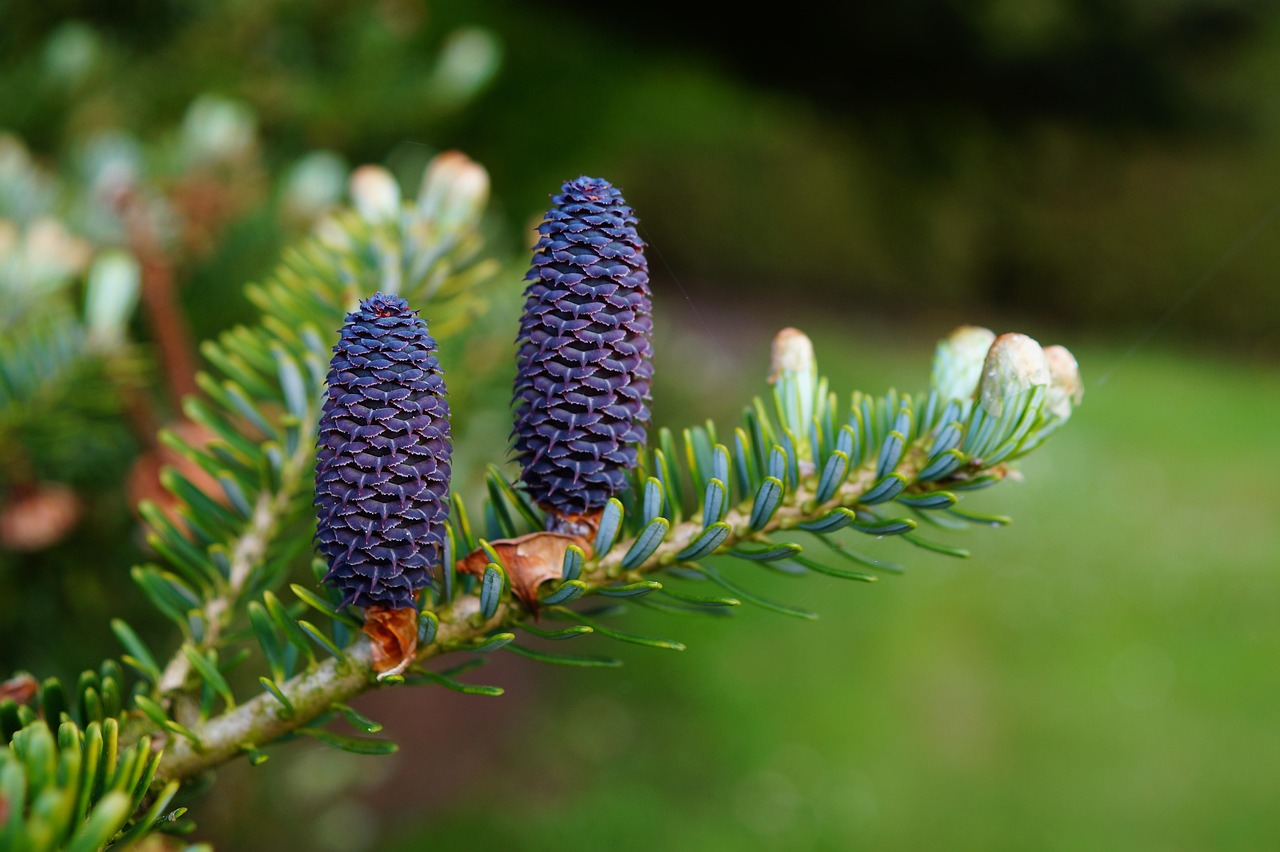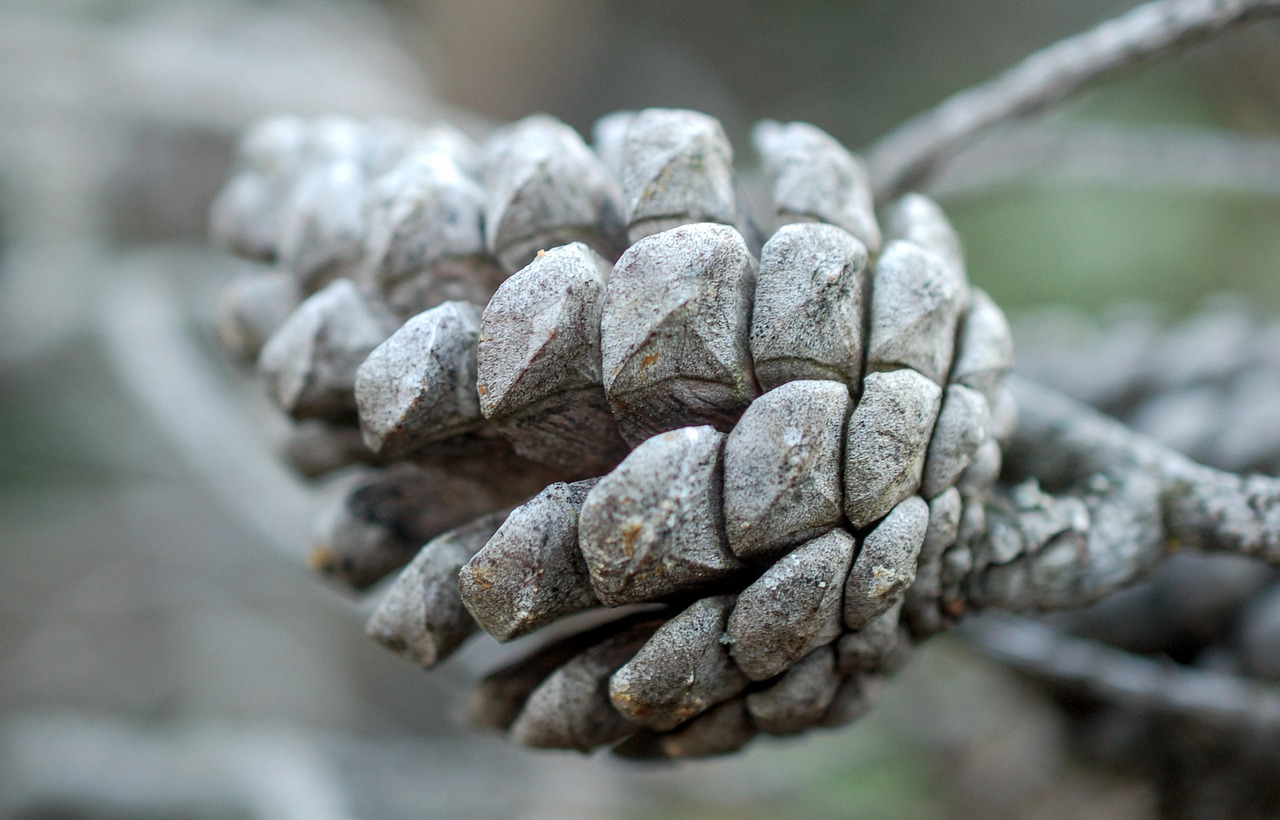Pine tree pruning is essential in suburban areas to manage growth and maintain healthy trees. Regular pruning helps prevent overgrowth, which can lead to safety hazards, reduced aesthetics, and issues with nearby structures.
Pine trees are popular choices for landscaping in suburban neighborhoods due to their beauty and ability to provide shade. However, these trees can grow rapidly, leading to overcrowding and potential hazards if not properly managed. Overgrown pine trees can block sunlight, obstruct views, and even threaten power lines. Pruning is a proactive measure that homeowners can take to ensure their pine trees remain healthy and manageable.

Understanding the right time and techniques for pruning is crucial for effective tree care. Proper pruning encourages healthy growth and can improve the overall appearance of the tree. In this article, we will explore the importance of pine tree pruning, the best practices for maintaining your trees, and tips for preventing overgrowth in suburban settings.
The Importance of Pine Tree Pruning
Pine tree pruning serves several important purposes. It helps to:
- Enhance the tree’s structure and shape.
- Improve air circulation and sunlight penetration.
- Remove dead or diseased branches.
- Reduce the risk of falling branches during storms.
- Encourage new growth in specific areas.
By carrying out regular pruning, homeowners can avoid many problems associated with overgrown trees. This not only keeps the trees looking good but also ensures they remain healthy and safe. Additionally, properly pruned trees are less likely to attract pests and diseases, further enhancing their longevity.

Best Practices for Pruning Pine Trees
When it comes to pruning pine trees, there are specific techniques that can maximize effectiveness while minimizing harm to the tree. Here are some best practices to keep in mind:
- Timing: The best time to prune pine trees is late winter or early spring before new growth begins. This timing allows for optimal healing and minimizes stress on the tree.
- Use the Right Tools: Invest in high-quality pruning tools such as hand pruners, loppers, and saws to make clean cuts. Sharp tools reduce damage and promote quicker healing.
- Aim for Balance: When pruning, aim to maintain a balanced shape. Remove branches that disrupt the natural form of the tree. Focus on thinning out areas that are too dense.
- Don’t Over-Prune: Avoid removing more than 25% of a tree’s canopy in a single season. Over-pruning can shock the tree and lead to health issues.
- Cut at the Right Spot: Make cuts just above a branch collar (the swollen area where a branch meets the trunk) to encourage proper healing.
Common Signs of Overgrowth
Recognizing the signs of overgrowth in pine trees is vital for timely intervention. Some common indicators include:
- Branches touching or growing into power lines.
- Dense foliage that blocks sunlight from reaching lower branches.
- Branches crossing or rubbing against one another.
- Dead or dying branches within the canopy.
- A significant increase in tree height without corresponding lateral growth.
If you notice any of these signs, it may be time to assess your pine trees and consider pruning. Addressing these issues early can prevent more significant problems down the line.

Tools Needed for Pruning Pine Trees
Having the right tools is essential for effective pruning. Below is a table listing some commonly used tools and their purposes:
| Tool | Purpose |
|---|---|
| Hand Pruners | For small branches up to ¾ inch thick. |
| Loppers | For branches between ¾ inch and 1½ inches thick. |
| Saw | For larger branches over 1½ inches thick. |
| Pole Pruner | For high branches that are out of reach. |
| Gloves | To protect hands from injury while handling tools. |
Using these tools correctly will make the pruning process more efficient and effective. Ensuring your tools are clean and well-maintained will help prevent the spread of diseases between trees.
Pine tree pruning is a crucial aspect of maintaining healthy trees in suburban environments. By understanding when and how to prune effectively, homeowners can enjoy beautiful, manageable pine trees for years to come.

Timing Your Pruning
Timing is one of the most critical factors in successful pine tree pruning. Pruning at the right time can significantly impact the health of the tree and its ability to recover. Different species of pine may have slight variations in ideal pruning times, but there are general guidelines that apply to most types.
Ideal Seasons for Pruning
The best seasons for pruning pine trees typically include:
- Late Winter: This is often considered the optimal time for pruning. It allows for clean cuts before new growth starts in spring, reducing stress on the tree.
- Early Spring: Pruning just as buds begin to swell is also effective. This timing helps direct energy toward healthy new growth.
- Post-Flowering: For certain pine species that produce cones, pruning can be performed after flowering to maintain shape without interrupting the growth cycle.
Pruning in late fall or winter, when trees are dormant, can minimize sap loss and reduce the likelihood of pest infestations. However, it is important to avoid pruning during periods of extreme cold, as this can damage the tree.
Techniques for Effective Pruning
There are several techniques that can be employed when pruning pine trees. Each technique has its purpose and can help achieve desired results.
Thinning Cuts
This method involves removing entire branches to reduce density and improve air circulation. Thinning cuts help maintain the tree’s natural shape while allowing light to penetrate deeper into the canopy.
Heading Cuts
Heading cuts involve trimming the ends of branches to encourage lateral growth. While this technique can promote bushier growth, it should be used sparingly to avoid stressing the tree.
Cleaning Cuts
Cleaning cuts remove dead, damaged, or diseased branches. This technique is essential for maintaining tree health and preventing the spread of disease.
How to Make Proper Cuts
Making proper cuts is vital to ensure the tree heals effectively. Follow these guidelines:
- Identify the branch collar before making a cut. This is the swollen area where the branch connects to the trunk.
- Make a clean cut at a slight angle above the collar to facilitate healing.
- Avoid leaving stubs, as they can become entry points for pests and disease.
Aftercare Following Pruning
Proper aftercare is crucial for helping your pine trees recover from pruning. Here are some steps to consider:
- Watering: Ensure the tree receives adequate water after pruning, especially during dry spells. This helps support new growth and recovery.
- Mulching: Applying mulch around the base of the tree can help retain moisture and suppress weeds.
- Pest Monitoring: Keep an eye out for pests and diseases in the weeks following pruning. Early detection is key to avoiding larger issues.
- Avoid Fertilizing Immediately: While fertilization can promote growth, it is best to wait until after the tree has fully healed from pruning.
Pine Tree Diseases and Pests
Pine trees are susceptible to various diseases and pests that can affect their health and growth. Being aware of these threats can help homeowners take proactive measures.
Common Pine Tree Diseases
| Disease | Description | Treatment |
|---|---|---|
| Needle Cast | A fungal disease causing needles to turn brown and drop prematurely. | Apply fungicides and improve air circulation through proper pruning. |
| Bark Beetles | Pests that bore into the bark, weakening and eventually killing trees. | Monitor for signs and remove affected trees promptly. |
| Pine Wilt Disease | A disease caused by nematodes that block water transport in trees. | No known cure; infected trees should be removed immediately. |
| Root Rot | A fungal infection that leads to root decay and tree decline. | Improve drainage and avoid overwatering; remove infected trees. |
By staying informed about potential diseases and pests, homeowners can act quickly when problems arise. Regular inspections, combined with proper pruning practices, can help maintain healthy pine trees in suburban landscapes.
Conclusion of Maintenance Practices
The maintenance of pine trees through careful pruning and monitoring is essential for preventing overgrowth and ensuring their longevity. By adhering to best practices, homeowners can create beautiful landscapes that enhance their properties while promoting healthy tree growth.
Understanding Pine Tree Growth Patterns
To effectively manage pine tree pruning, it is important to understand their growth patterns. Pine trees exhibit specific growth habits that influence when and how they should be pruned. Recognizing these patterns can aid in making informed decisions regarding tree care.
Growth Stages of Pine Trees
Pine trees go through several distinct growth stages throughout their lives:
- Seedling Stage: This is the initial stage where young pine trees establish roots and begin to grow. During this time, minimal pruning is needed, as the focus should be on promoting healthy root development.
- Juvenile Stage: In this stage, trees are more robust and begin to develop a defined shape. Pruning can help shape the tree and encourage healthy lateral growth.
- Mature Stage: Mature pine trees often require regular maintenance pruning. This includes thinning and cleaning cuts to manage growth and health.
- Declining Stage: As trees age, they may show signs of decline. Pruning can help remove dead or diseased branches to prolong the tree’s life.
Understanding these growth stages allows homeowners to tailor their pruning techniques and schedules to the specific needs of their pine trees at different ages.
The Role of Environmental Factors
Environmental factors play a significant role in the growth and health of pine trees. These factors can influence how quickly a tree grows and how often it may need pruning.
Soil Quality
The quality of the soil directly affects a pine tree’s health. Well-drained, nutrient-rich soil supports strong root systems and robust growth. Poor soil conditions can lead to weakened trees that require more frequent pruning.
Weather Conditions
Weather patterns also impact pine tree health:
- Temperature: Extreme temperatures can stress trees, making them more susceptible to diseases and pests.
- Moisture Levels: Both drought and excessive moisture can affect tree health. Proper watering practices are essential for maintaining healthy pine trees.
- Wind Exposure: Trees in windy areas may require more frequent pruning to reduce the risk of broken branches.
Being aware of these environmental factors can help homeowners make better decisions about when to prune and how much to prune.
Enhancing Pine Tree Aesthetics
Pine tree pruning not only promotes health but can also significantly enhance the aesthetic appeal of a landscape. Here are ways to achieve an appealing look through effective pruning:
Shaping Techniques
Shaping is an art that can transform pine trees into visually striking features in your yard. Consider the following shaping techniques:
- Crown Thinning: This technique involves removing select branches from the upper part of the tree to allow more light to filter through. It creates a more open appearance while maintaining the tree’s overall structure.
- Crown Raising: If lower branches are obstructing views or pathways, raising the crown by cutting off some lower branches can improve visibility and access while enhancing aesthetics.
- Crown Reduction: For trees that have grown too tall, crown reduction involves shortening branches while maintaining the natural shape of the tree. This technique reduces height without compromising its visual appeal.
Seasonal Considerations for Aesthetics
The aesthetics of pine trees change with the seasons, making timing important when planning for visual impact:
- Spring: Pruning just before new growth begins allows for lush foliage that enhances visual appeal.
- Summer: Light pruning during the summer can help maintain shape but avoid heavy pruning, which may detract from the tree’s fullness.
- Fall: As leaves begin to change, consider light shaping to prepare for winter while allowing existing beauty to shine through.
- Winter: Dormant season is ideal for major pruning tasks since it minimizes stress on the tree.
Pine Tree Pruning for Health and Safety
Pine tree pruning is not only about aesthetics but also plays a crucial role in maintaining safety in suburban environments. Here are important safety considerations:
Reducing Hazards
Pine trees that are overgrown or have dead branches pose safety risks. Consider these tips:
- Remove Dead or Dying Branches: Regularly inspect for dead limbs that could fall and cause injury or damage.
- Avoid Overcrowding: Ensure that trees are not too close to buildings or power lines, as this can create hazards during storms or high winds.
- Crown Maintenance: Keeping the crown well-maintained reduces wind resistance and minimizes the risk of branches breaking during storms.
By focusing on health and safety through appropriate pruning techniques, homeowners can ensure their pine trees remain safe while enhancing their surroundings.
The Economic Benefits of Proper Pruning
Investing time and resources in proper pine tree pruning can yield significant economic benefits for homeowners. Here are a few advantages:
- Increased Property Value: Well-maintained trees enhance curb appeal, which can increase property value when selling a home.
- Reduced Risk of Damage Costs: Proactive pruning reduces the likelihood of property damage from fallen branches or weakened trees, saving money in repairs.
- Lowers Energy Costs: By managing tree height and canopy spread, homeowners can reduce energy costs associated with heating and cooling their homes.
The economic advantages of proper pine tree maintenance extend beyond mere aesthetics, presenting tangible benefits that contribute to long-term savings and property value enhancement.
Long-Term Maintenance Strategies
To ensure the health and beauty of pine trees over the long term, homeowners should adopt comprehensive maintenance strategies. These strategies encompass not just pruning but also a holistic approach to tree care.
Regular Inspections
Conducting regular inspections of pine trees can help identify potential problems before they escalate. Homeowners should look for signs of:
- Diseases: Look for discoloration, wilting, or needle drop that may indicate disease.
- Pests: Check for unusual holes in the bark or sticky residue on needles.
- Physical Damage: Assess for broken branches or signs of storm damage that may need immediate attention.
By staying vigilant, homeowners can address issues quickly, reducing the need for extensive pruning or removal later on.
Soil and Fertility Management
Maintaining healthy soil is vital for the overall health of pine trees. Here are some tips to ensure optimal soil conditions:
- Soil Testing: Conduct soil tests to determine pH and nutrient levels. This helps in understanding what amendments may be necessary.
- Mulching: Apply organic mulch around the base of trees to retain moisture and suppress weeds while enriching the soil over time.
- Fertilization: Use slow-release fertilizers in spring to provide essential nutrients without overwhelming the tree.
A well-nourished tree is more resilient against pests and diseases, leading to a longer lifespan and reduced maintenance needs.
Watering Practices
Proper watering is critical for young pine trees, especially during dry spells. Here are some effective watering practices:
- Deep Watering: Water deeply and infrequently to encourage strong root development rather than shallow surface roots.
- Check Moisture Levels: Use a moisture meter or dig a small hole to assess soil moisture before watering.
- Avoid Overwatering: Ensure that drainage is adequate, as too much water can lead to root rot and other issues.
These practices support healthy growth and minimize the chances of stress-related problems in your trees.
Community Awareness and Involvement
Pine tree care does not have to be a solitary endeavor. Engaging with community resources can enhance knowledge and support for maintaining trees in suburban environments.
Local Extension Services
Many regions have local extension services that offer resources for homeowners. These services can provide:
- Workshops: Educational workshops on tree care, pruning techniques, and pest management.
- Consultations: Expert consultations to assess tree health and provide tailored advice.
- Community Programs: Opportunities to participate in tree planting or care programs.
Neighborhood Engagement
Creating a community network focused on tree care can lead to shared resources, knowledge, and experiences. Homeowners can:
- Share Tools: Organize a tool-sharing program for pruning equipment among neighbors.
- Group Pruning Days: Host community pruning days where residents can learn from each other while maintaining neighborhood trees.
- Awareness Campaigns: Start initiatives to raise awareness about the importance of tree care within the community.
This collaborative approach not only enhances individual knowledge but also fosters a sense of community responsibility towards maintaining a healthy environment.
Final Thoughts
Pine tree pruning is an essential practice for homeowners in suburban areas looking to maintain the health, aesthetics, and safety of their landscapes. By understanding the growth patterns of pine trees, recognizing the importance of timing, and employing proper techniques, homeowners can effectively manage their trees. The economic benefits of thoughtful pruning further emphasize its value in enhancing property appeal and minimizing costs associated with tree damage.
The commitment to regular maintenance, including inspections, soil management, and community involvement, creates a supportive ecosystem for pine trees. As suburban environments continue to evolve, proactive tree care will remain a vital component of sustainable living, ensuring that these majestic trees continue to thrive and enrich our surroundings for generations to come.
Ultimately, investing in proper pine tree care is an investment in both one’s property and the environment. With the right knowledge and practices, homeowners can cultivate beautiful, healthy landscapes that benefit both their homes and their communities.
